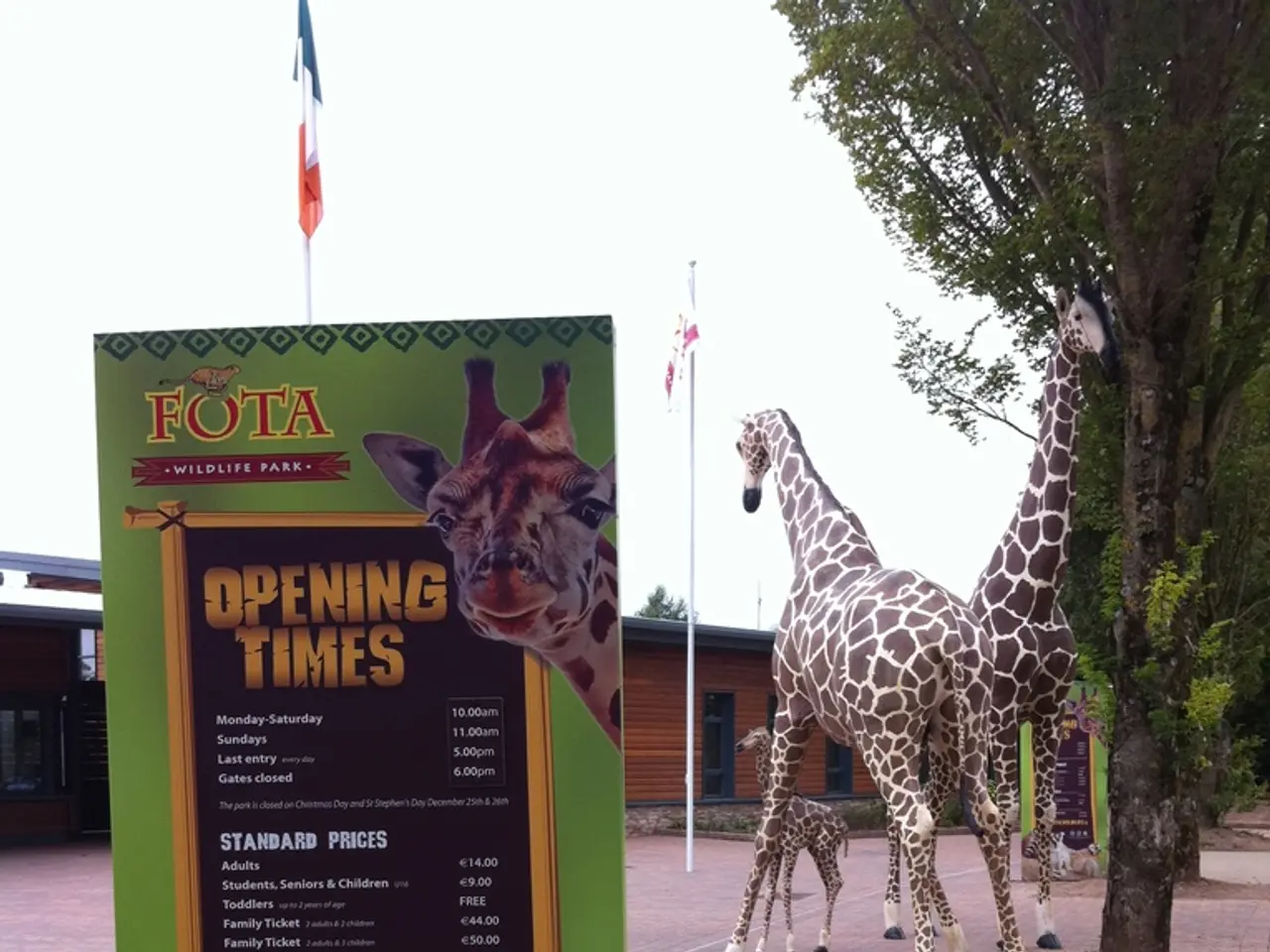Kazakhstan's Efforts to Restore Endangered Species Meet Challenges in Balancing Ecosystems
Kazakhstan is making strides in wildlife conservation, with a focus on endangered species and the expansion of protected natural areas. The country's commitment to conservation is evident in the upcoming revision of the **Red Book of Kazakhstan**, which will include 217 animal species and subspecies, reflecting both ongoing threats and conservation successes.
One of the most significant conservation achievements in Kazakhstan is the recovery of the saiga antelope, with a population of 4.1 million as of 2023. This remarkable recovery is due to targeted conservation initiatives like the Altyn Dala Conservation Initiative, which received international recognition through Prince William’s Earthshot Prize in 2024. Kazakhstan is also donating 1,500 saiga antelopes to China to support population restoration there, demonstrating its role as a regional conservation leader.
The snow leopard, another endangered species in Kazakhstan, is listed in the Red Book, indicating it remains under significant threat. Protected areas and anti-poaching measures are critical for the species' survival, but it still faces pressures from habitat loss and climate change. The snow leopard population is estimated to have increased by 26% between 2019 and 2024, from 140 to 170 individuals to 152 to 189.
Other species benefiting from Kazakhstan’s conservation efforts include the kulan (Asiatic wild ass) and Przewalski’s horse. Both species are listed in the Red Book and are receiving support through reintroduction and habitat restoration projects.
Balancing wildlife conservation with agricultural livelihoods has become a major policy challenge in Kazakhstan. However, the country is exploring innovative projects, such as the proposed reintroduction of the Caspian tiger, a partnership between the Kazakh government and WWF, which could provide a conservation framework benefiting multiple species through habitat restoration.
Climate change, water diversion for agriculture, forest fires, and the expansion of farmland and cities continue to erode natural habitats in Kazakhstan. Effective conservation will require adaptive management, continued investment in protected areas, and international cooperation.
**Key Points**
- The Red Book of Kazakhstan is being updated for the first time in 15 years, with 217 animal species and subspecies to be included. - The saiga antelope has experienced a remarkable recovery, with numbers now at a record 4.1 million. - Around 70% of snow leopards live in protected zones. - Kazakhstan's reintroduction projects aim to reestablish a stable population of around 45 Przewalski’s horses by 2029. - Monitoring tools, such as satellite collars and camera traps, have helped deepen understanding of snow leopard behavior and migration patterns in Kazakhstan. - The Global Environment Facility launched an initiative in 2018 to support the conservation of forest ecosystems and wildlife, including snow leopard habitats and their prey species. - The International Union for Conservation of Nature (IUCN) reclassified the saiga from critically endangered to near threatened in 2023. - UNDP has implemented 12 biodiversity projects in Kazakhstan since 2004, with five more currently underway. - Two Amur tigers were transported to the Ile-Balkhash State Nature Reserve in 2023 to revive the wild tiger species in Kazakhstan. - Kazakhstan has expanded specially protected natural areas from 869,000 hectares to more than 30.9 million hectares since gaining independence. - A new Merke Regional Nature Park is being established to safeguard snow leopard populations in the Zhambyl Region. - Kazakhstan donated 1,500 saiga antelopes to China for resettlement in the country's western regions in June. - Climate change, water diversion for agriculture, forest fires, and the expansion of farmland and cities are eroding natural habitats in Kazakhstan. - Balancing wildlife conservation with agricultural livelihoods has become a major policy challenge in Kazakhstan. - Kazakhstan is increasingly engaging in cross-border conservation, exemplified by saiga donations to China and participation in CITES negotiations, positioning itself as a key player in Central Asian biodiversity.
- The upcoming revision of the Red Book of Kazakhstan will include 217 animal species and subspecies, showcasing both ongoing threats and conservation successes in the country.
- The astounding recovery of the saiga antelope, now at a population of 4.1 million, is courtesy of targeted conservation initiatives like the Altyn Dala Conservation Initiative.
- Despite the recovery of the saiga antelope, the snow leopard, another endangered species in Kazakhstan, remains under significant threat due to habitat loss and climate change.
- The kulan (Asiatic wild ass) and Przewalski’s horse are among the species benefiting from Kazakhstan’s conservation efforts, receiving support through reintroduction and habitat restoration projects.
- Balancing wildlife conservation with agricultural livelihoods has become a significant policy challenge in Kazakhstan, with innovative projects like the proposed reintroduction of the Caspian tiger being explored.
- Efficient conservation in Kazakhstan necessitates adaptive management, continued investment in protected areas, and international cooperation to combat ongoing threats such as climate change and the expansion of farmland and cities.
- Monitoring tools, including satellite collars and camera traps, have provided important insights into the behavior and migration patterns of snow leopards in Kazakhstan.
- The Global Environment Facility launched an initiative in 2018 to support the conservation of forest ecosystems and wildlife, including snow leopard habitats and their prey species.
- The International Union for Conservation of Nature (IUCN) reclassified the saiga from critically endangered to near threatened in 2023.
- UNDP has implemented 12 biodiversity projects in Kazakhstan since 2004, with five more currently underway.
- Two Amur tigers were transported to the Ile-Balkhash State Nature Reserve in 2023 to revive the wild tiger species in Kazakhstan.
- Kazakhstan has expanded specially protected natural areas from 869,000 hectares to more than 30.9 million hectares since gaining independence.
- A new Merke Regional Nature Park is being established to protect snow leopard populations in the Zhambyl Region.
- Kazakhstan's role in regional conservation extends beyond its borders, as demonstrated by saiga donations to China and participation in CITES negotiations, affirming its status as a key player in Central Asian biodiversity conservation.




